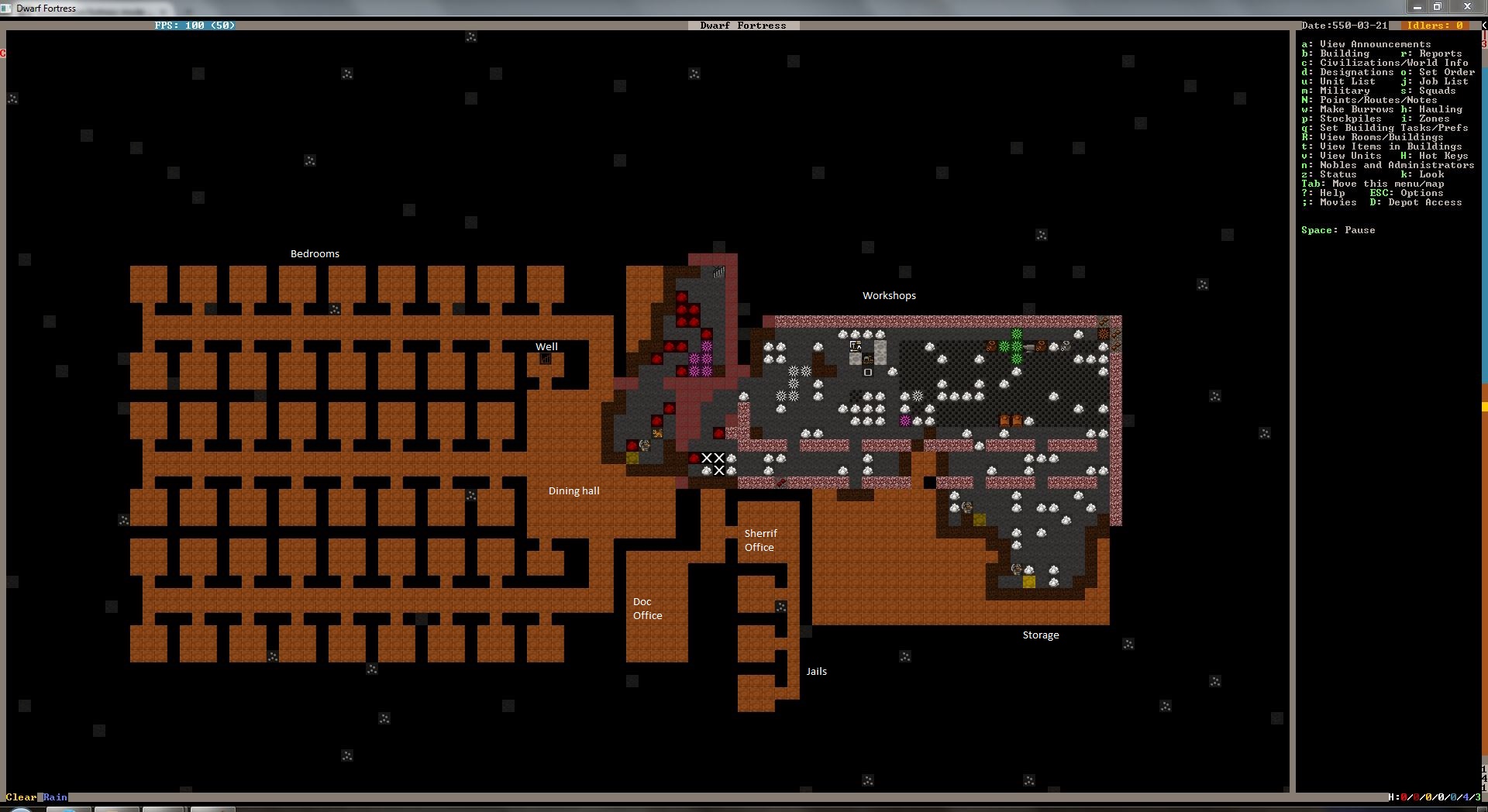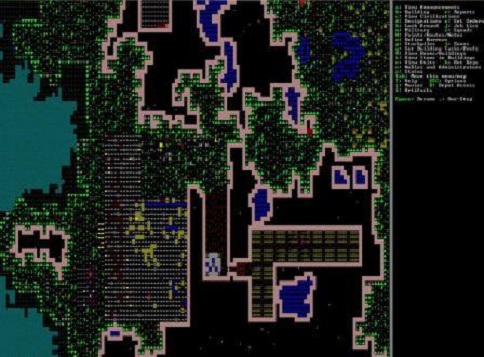
For example, a Track NE (northeast) tile allows a minecart on it to move either north or east from its present position. These directions dictate which directions a minecart on a given tile may move from that tile.
Dwarf fortress expand stockpile series#
Track tiles and tracked ramp tiles have a direction or series of directions associated with them.


Minecart tracks are made up of contiguous track, tracked ramp, or bridge tiles. The best minecart materials for full/empty switching are as follows:īanana roasts required to trigger (for scale)
Dwarf fortress expand stockpile full#
Because pressure plates can be set to trigger at intervals of 50 Urists, minecarts with weights just under a multiple of 50 are ideal for switching based on whether they're full or empty. The weight of a minecart is one twenty-fifth (1/25) the density of its material in Urists. Bug: 6296 However, the load of a minecart does affect whether a pressure plate triggers or not, based on the pressure plate's setting. The weight of the loaded minecart does not affect the initial velocity received from pushing or launching from a roller. Minecarts have a size capacity of 500,000 five times the capacity of wheelbarrows.Įxamples of the capacity of one cart Item To control which items are to be transported, you can add conditions specifying: (1) which kind of items are to be loaded and unloaded, (2) stockpile links to define which stockpile(s) the items should be un/loaded to and from. The hauling labor required for pushing and guiding carts is called "Push/Haul Vehicles" and is turned on by default. Carts can be either pushed (a dwarf stands at a stop and gives the cart a single push) or guided (a dwarf continually pushes the cart forward, guiding it along the track). The most basic conditions are how the cart's movement is initiated and in which direction the cart should start moving. Finally, you need to construct stops on your track (with b C S) where the minecart will start and stop.Īfter you have created the stops and assigned a cart to the track, you must create logic routes connecting several stops and designate starting conditions for each stop. For the minecart to be able to move, you also need to carve (with d T) or construct (with b C T) a track, which could be as simple as a straight line. First of all, you need an actual minecart, constructed either in a carpenter's workshop or metalsmith's forge. Minecarts can be used to swiftly transport dwarves, fluids, and/or large amounts of items, but before you have a functional minecart, there are several preconditions that need to be met. The invention of minecarts revolutionized the Science of Dwarfputing by enabling smaller, faster logic systems to be built. Adventurers can also pick up and relocate minecarts.

However, minecarts moving fast enough or being ridden cannot be stolen.Īlthough most of the utility of minecarts is in fortress mode, an adventurer can also ride in a minecart. Thieves or even mischievous animals can steal minecarts, even when they are moving on a track. Despite their five-times-greater capacity, they are only 33% larger than wheelbarrows (minecarts have a size of 4000) and are identical in base value when made from the same material (the value may differ due to the item quality). Just like wheelbarrows, minecarts are considered items and are stored in a furniture stockpile. Tracks may be carved into stone, or constructed the latter allows above-ground routes, but these are more difficult to set up due to their additional material requirements. It can be made of wood at a carpenter's workshop or 2 bars of metal at a metalsmith's forge (using the metalcrafting labor.) Minecarts store up to five times as many items as wheelbarrows and are quite a bit faster than dwarves hauling objects by hand, but have the disadvantages of requiring a dedicated track network, a complex route planning phase, and the possibility of dwarves blundering into the path of carts filled with lead ore. A minecart is a tool intended for hauling.


 0 kommentar(er)
0 kommentar(er)
